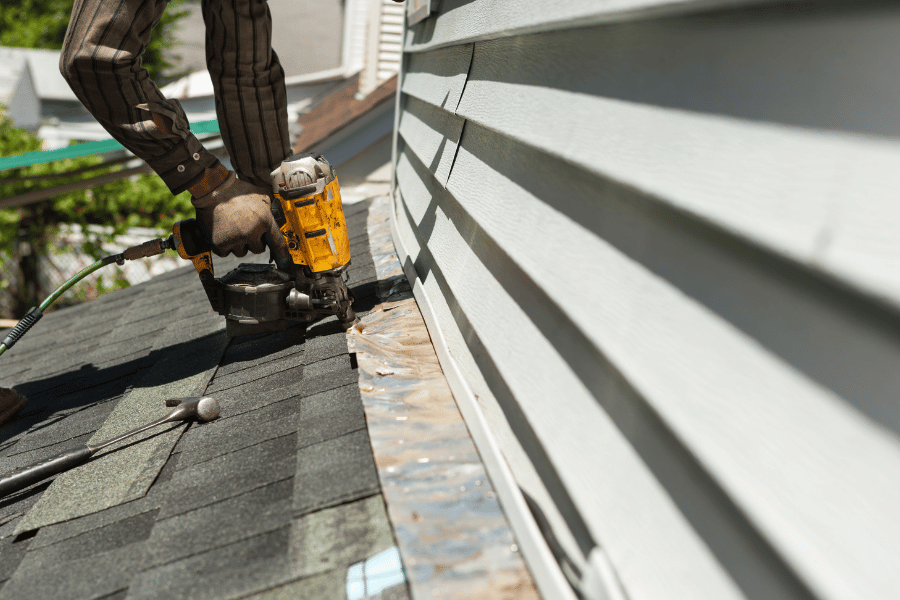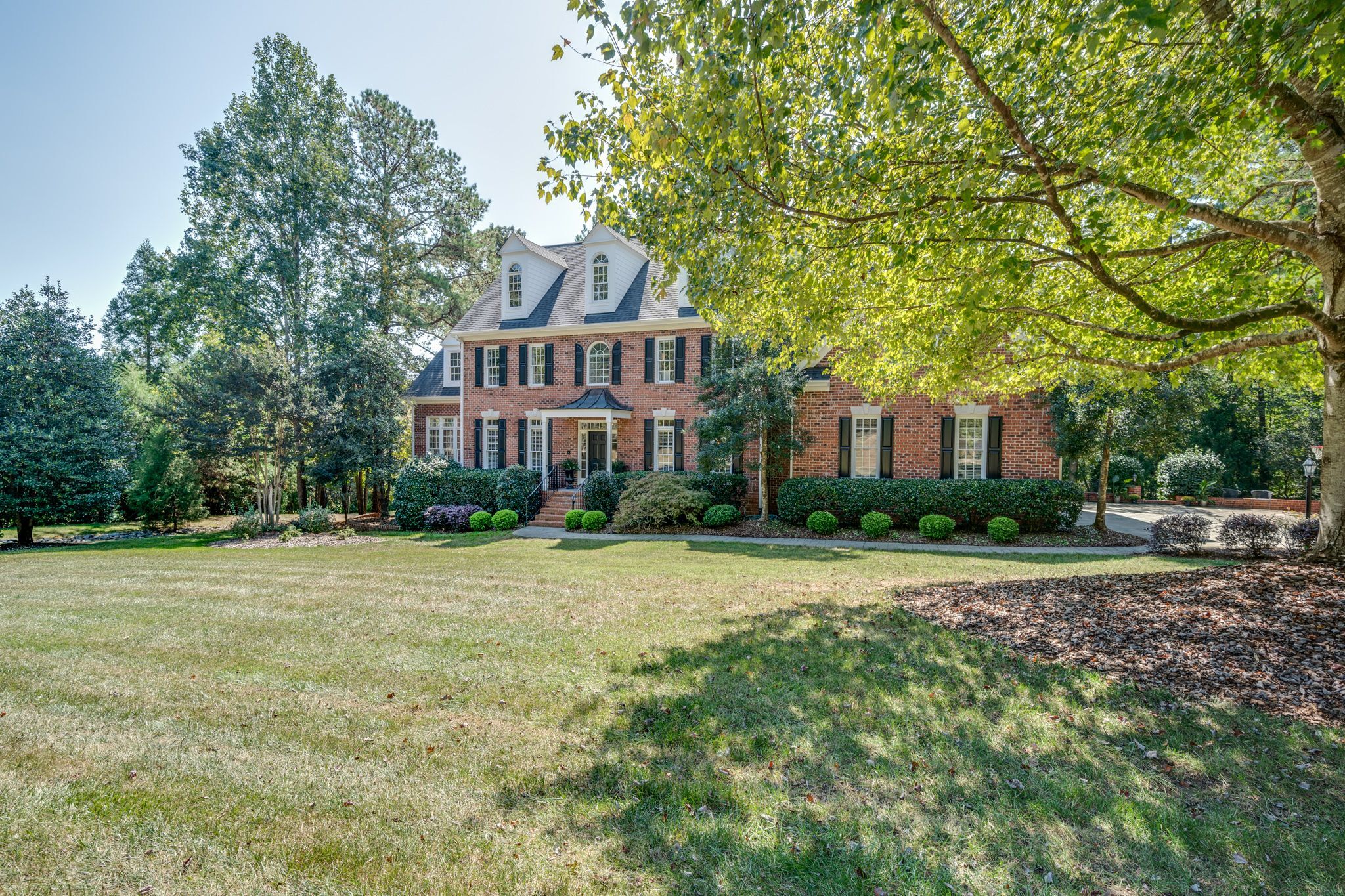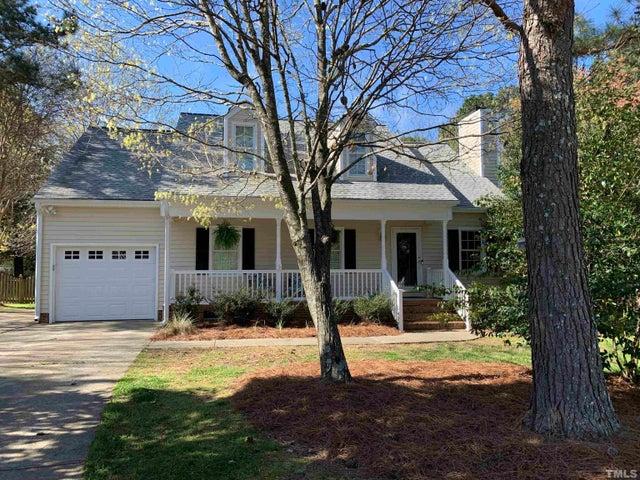10 Alarming Signs Your Roof Needs Repair
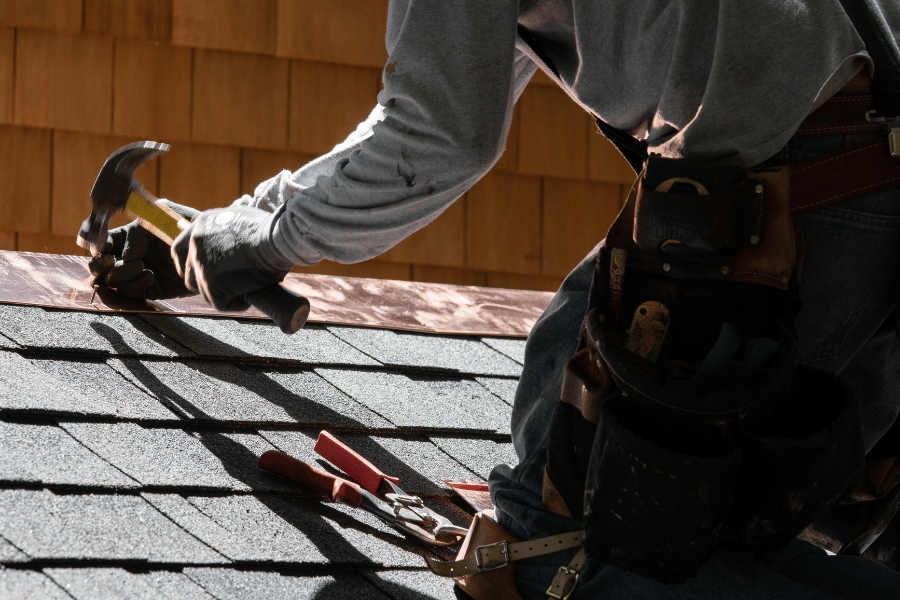
Signs Your Roof May Need Repair
Do you need a new roof? Here are ten alarming signs your roof needs repair.
A roof protects your home from sun, snow, rain, hail, the wind, debris from trees, and more. The constant beating your roof takes every day makes it one of the most essential pieces of your home's structure, and that's why roofing costs aren't cheap. We need to break it down into layers to understand better how roofs work.
First, you will need a roof deck, often made of plywood or oriented strand board at its core. This is the bottom layer of the roof. In sunnier/warmer climates, builders may use foil-faced panels to reflect heat away from the roof. This will help the insulation by keeping a cooler attic and reducing energy costs.
To protect the actual plywood, an underlayment is installed. The underlayment is felt and sometimes reinforced with fiberglass to protect the roof from water that the shingles may not have been able to stop.
Once the roof structure is up, aluminum or steel is attached to the outer edges of the roof to help protect it from wind and water. This is called the 'drip edge' of the roof and is installed over the underlayment.
Once those three layers are up, the shingles must be installed on top. Asphalt shingles are the most commonly used for homes in the Raleigh market. The shingles are made from a felt or fiberglass mat that's easy to cut, nail, and install. Once these shingles are made, they become highly resistant to water and sunlight. The shingles on your roof are the first line of defense against Mother Nature.
Mother nature dictates the type of roof and shingles you need to protect your home and energy costs best.
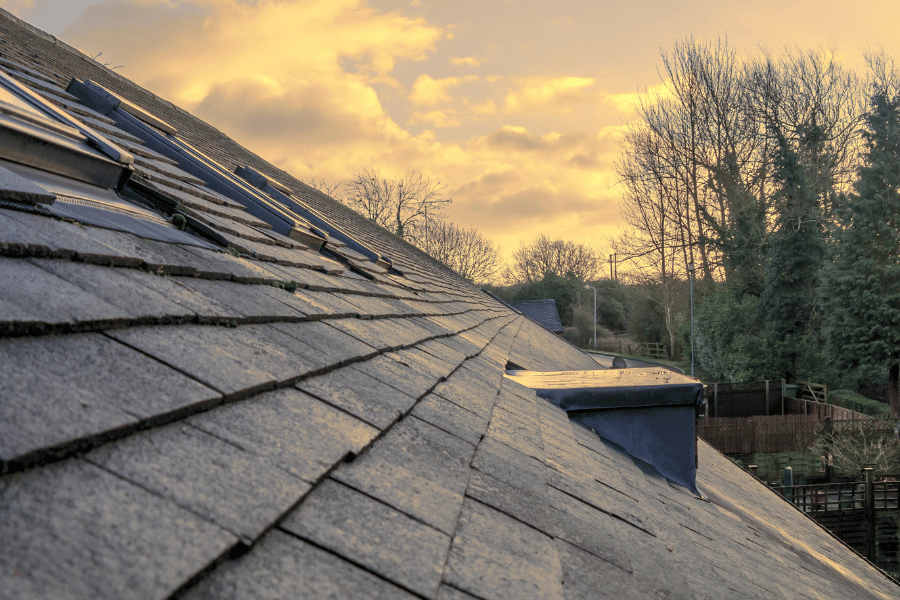
Types of Roofs
Every roof is different. The roofing materials used can be anything from metal to shingles, and the materials used for shingles will differ. Where you live is significant in the type of roof best for your house because of the local weather conditions. If you live in Southern California, your roof will have different materials than in upstate New York.
Asphalt Shingles
Among the most popular and affordable is the asphalt shingle. These shingles are made from organic materials and sometimes fiberglass. They come in different shapes and sizes to allow for different styles of roofs and are great for saving on your energy costs.
A few things to remember about asphalt shingles are that they don't fare well in climates with fluctuating temperature changes. In these situations, the shingles are likely to crack. The asphalt shingles are made of weaker materials than some other types of shingles, and they can only be used on a roof with a steep slope.
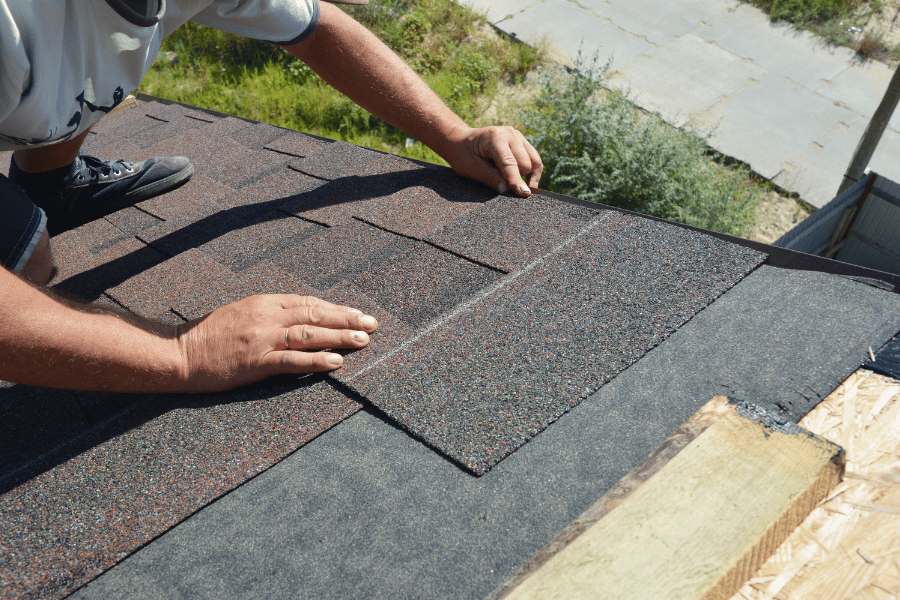
Fiberglass Shingles
Fiberglass shingles are a type of asphalt shingle made with different materials. They are made with a fiberglass base and a waterproof coating. The singles are given an asphalt coating and mineral fillers over the base, allowing it to be water-resistant. They add an additional layer of protection that normal asphalt shingles do not.
Organic Shingles
Along with fiberglass shingles, organic shingles are also a type of asphalt shingle made with wood chips, recycled cardboard, paper, rags, and other organic materials. These shingles will not last as long as fiberglass shingles as they only have a 20-year life expectancy.
Areas with high moisture and saturation are not good candidates for organic shingles because they begin to degrade and break long before the average life expectancy. Most homeowners opt for fiberglass because of the lack of durability organic shingles have.
Tile Shingles
Tile shingles are a great roof material for those looking for more style. Tile shingles will give your home that Spanish and Mediterranean feel. These shingles are some of the most stylish and durable, with an average age of 50. Although tile shingles are among the best, they also come with a hefty cost, albeit over 50 years, which makes them more attractive.
Things to consider when selecting tile shingles is that they do come with their own set of problems. Tile shingles are heavy, and your roof may not be able to support their weight, so have an experienced roofing contractor take a look beforehand. These stylish shingles can also crack, leak, and create holes for water to get through. You'll have to replace them as you would with asphalt shingles.
Wood Shingles
The middle-of-the-road shingles, when it comes to cost, are wood shingles. The wood shingles are more environmentally friendly, and average age can be anywhere from 40-50 years. Wood shingles are durable, energy-efficient, and available in cedar and redwood.
The biggest drawback of wood shingles is that they are more likely to catch on fire and suffer from termites and mold more often than other shingle materials.
Similar to the other roofing materials, they can be cracked or missing, and in most scenarios, you will be forced to replace the shingles entirely.
Metal Roofing
Depending on your steep or flat roofline, it will play a role in the type of roof that works best for you. Metal roofs are becoming increasingly popular, especially if your roof is flat. The materials used in a metal roof are typically constructed from a low-galvanized metal, as well as copper, tin, zinc, and aluminum.
Taking good care of your metal rough can last between 40 to 70 years. During rain and hail storms, expect more noise with metal roofs.
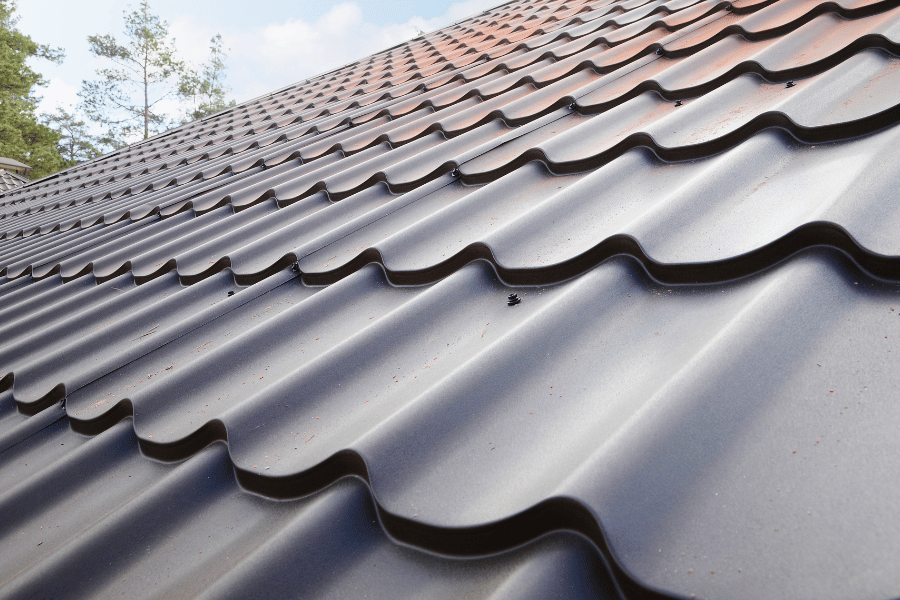
Slate shingles
The longest-lasting type of shingle. Slate shingles range in age, lasting anywhere from 80 to 100 years. Not only that, they offer some of the best protection in general. When it comes to water damage or resistance, they are ideal, making them a great shingle for homes that suffer from frigid winters.
The average cost for slate shingles is far more expensive than their counterparts. They are expensive to repair; only some companies specialize in these shingles. When you have a slate shingle roof, you will be forced to rely on professionals to fix the roof because there is a serious risk of injury when you try to do it on your own
Roofs become especially important when it comes time to buy or sell a home.
Before selling your house, you may want to ensure the roof is in good shape because it may prevent your home from selling. If your home goes under contract and there are issues with the roof, most insurance companies will not give the buyers your home insurance. Not to mention that your real estate photos will look great with a new roof.
Here are ten signs you may need a roof repair!
Chapters
1. Roof Age
The age of a roof is a clear sign that it may need repair. The average age estimate for each roof is different, so pay attention to how your roof is constructed and the potential warning signs for the materials used on your specific roof.
Besides the age of your roof, temperature fluctuation and storms are two of the larger problems that cause roof damage. No matter the age of your roof, you should constantly monitor it, especially after storms and as the seasons change.
The amount of sunlight your roof receives also plays a large role in the age of your roof. If many trees block the sunlight or even drop debris on the roof, water will sit for a longer period of time, increasing the chances of damage or mold growing. In general, your roof should receive more sunlight than not; too much heat is what may cause issues.
Some people prefer to be reactive instead of proactive regarding their roof, so they will wait until there is a problem. Once your roof starts leaking, it creates internal damage within the house, leading to much bigger problems than a new roof.
Your roof's age matters when it comes to home insurance and when you make an insurance claim. If your roof is past its average age estimate, it's typical for the insurance company to ask for more proof the roof is okay by hiring a specialized roofing contractor, denying the coverage altogether, or sometimes allowing the coverage.
There have been a lot of scams throughout the country that hurt the insurance company. The roofing contractor allegedly says there is damage from a storm and that it needs to be replaced immediately. So, the insurance company can only inspect the roof once it's already fixed.
The insurance company is then slapped with the bill for the new roof. Remember that these scams are becoming less and less likely to be insured as the wording in insurance contracts is being changed.
2. Shingles Buckling or Curling
One clear indicator that your roof needs repair or a new roof is when the shingles begin buckling or curling. This poses a serious threat to your home because it will allow water to pass the main level of protection.
Once shingles begin buckling or curling, you should have a roofing contractor to your home immediately for inspection of the entire roof. Sometimes, it may be a few shingles here and there, where a patch job will work fine for a few years.
If you need an entirely new roof, you should ask for several quotes and the type of materials that will be used in the shingles themselves. How were the shingles constructed that the contractor intends to use? Is it appropriate for your home and the conditions of the weather?
The main threat to shingles buckling or curling is water. Water is one of the most damaging things to homes in general, and its ability to leak into your house can cause much bigger issues. Make sure your shingles are well cared for.
3. Loose Ballast
Ballasted roofs have been around for over a decade. The problem isn't necessarily with loose ballast but with the connection to the shingles. It's relatively easy for water to fill up and stand if the ballast breaks loose from the shingles.
One of our clients had a home to sell in Cary with a loose ballast. This caused the home insurance company to look further into the inspection and ultimately decide not to grant home insurance.
The buyer for the home decided that it was a sign not to buy the property after being declined home insurance—anyone selling their home needs to understand that the possibility of this happening is a reality. Ensure your roof is ready when it comes time to sell your house. If you've made roof insurance claims in the past, that may raise red flags, too.
4. Leaking
A leaking roof is a clear sign the roof needs repair or that you need a whole new roof altogether. If your roof leaks, I would stop reading this article and start contacting roofing contractors. Some home warranties and insurance policies may cover a leaking roof, and depending on the cause of the damage, they may even cover an entirely new roof (don't count on it, though).
Regarding ROI on the sale of your house, a new roof is likely to be close to even. If you need a new roof because of leaking or internal damage, don't hesitate to buy one. The roof will help protect your house and your family and help you sell your home fast. Be prepared for winter weather too because that can affect the roof as well.
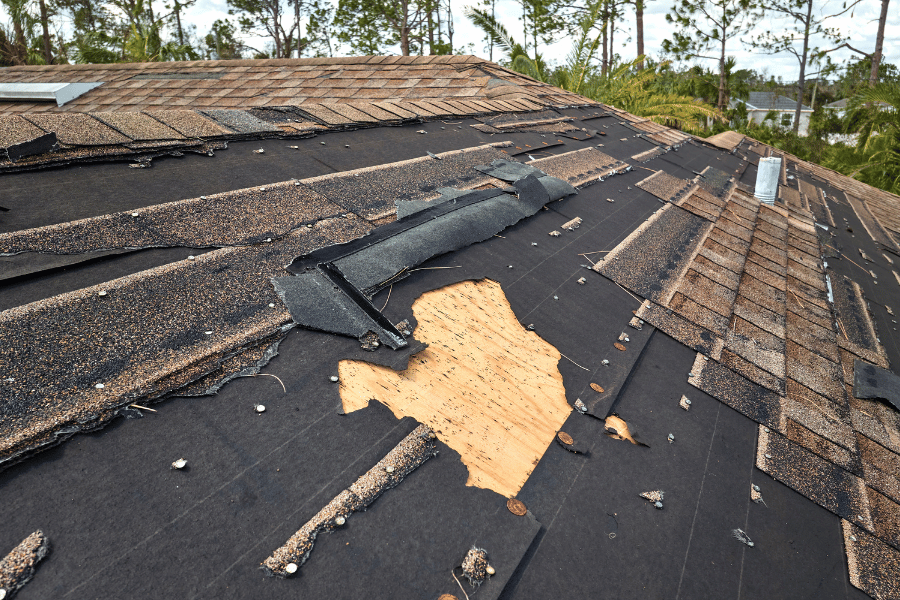
5. Valleys in the Roof
Valleys in the roof are clear indicators that the roof needs repair and is damaged. Valleys are often normal wear and tear caused by water sitting and weakening the strength of the wood below the shingles. These valleys need to be fixed immediately. The valleys could be from a storm, ice damage, or some other cause where the insurance company may even help with the repair. Hiring a roofing contractor to assist makes much sense when this problem occurs.
Once a valley is formed, the water will continue to move in that direction, thanks to gravity. Once the water continues to stand in the same valley already weakened from the water, it exacerbates the problem and may even cause the roof to cave in at some point.
6. Missing Shingles
Missing shingles is a problem for a roof's health. If your roof is missing shingles, you'll want to fix that as soon as possible. The first layer of protection (the shingle) exposes your roof's adhesive to water. It can only protect the roof so much without the shingle's assistance.
When shingles go missing, you should be able to see it if you're checking out your roof consistently. If you can fix it sooner rather than later, it shouldn't cause permanent damage to the roof, though it could be a sign that the actual roof needs to be replaced.
7. Chimney Flashings
Chimney flashings are an excellent way to tell if your roof needs to be repaired or even replaced. When Santa comes down the chimney, he may accidentally loosen or break the flashings.
The purpose of chimney flashings is to protect the home from where the roof meets the chimney. The flashings are to protect against any water, debris, and other potential things that could cause damage. If the flashings become loose or are not properly sealed, water can easily sneak into your home.
Chimney flashings should be observed often to ensure they are healthy and in proper working order.
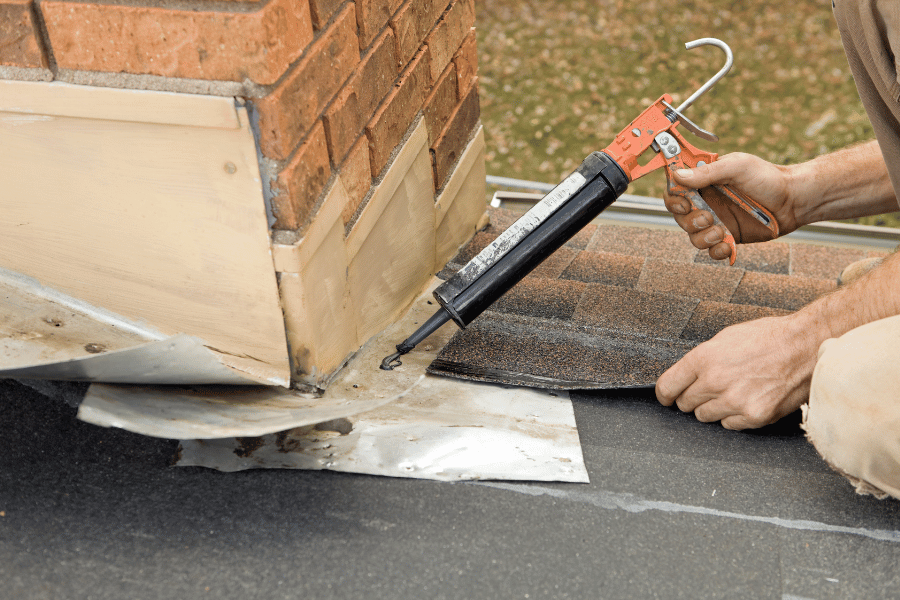
8. Shingle Pieces in the Gutters
When you're cleaning out your gutters, and you find pieces of shingles in the gutters, it indicates a problem. If fragments of shingles start breaking off, you likely need to hire a roof inspector to determine the actual health of the roof, especially if your roof is reaching its average age estimate.
Hiring a roofing contractor when you find broken shingles can help with your home warranty and insurance claims on your roof as well.
9. Bounce
If you're walking around on your roof and find some spots are a little bouncy, it could be due to underlying water damage. Sometimes, water may not even be able to be seen without actually feeling the roof for yourself. A couple of Raleigh Realty buyers have had home inspectors up on the roof where valleys and bounces cause initial concern and sometimes become larger problems.
If you're selling your home, then you will want to make sure there is no bounce in the roof, or it could lead to more problems down the road for the buyers, who will have inspectors looking at the roof and will need to have home insurance companies approve them for the purchase.
10. High Energy Bills
Since a damaged roof can cause warm and cool air to leak out of the home, it is important to pay attention to any unusually high energy bills that may lead to a roof repair. Sometimes, a roof may need a replacement to reduce these costs.
FAQs
What is the life expectancy of a roof?
Depending on the type of shingles used, roofs can last more than 50 years if properly cared for. Most roofs with asphalt shingles can last up to 20 years.
How much damage does a roof need to be replaced?
A good rule of thumb is if the damage to a roof is more than 30%, then it is probably time for a roof replacement.
Final Thoughts on Roofs, Repairs, Costs, and Age Estimates
When buying or selling a home, the roof will play a factor in your decision-making. We have had clients, specifically buying a home in Clayton, who chose not to continue purchasing based on roof damage in the inspection report.
The age and health of a roof are two of the main indications of whether or not a roof replacement will be needed soon. Your insurance company may or may not give you home insurance based on the roof's age and health alone, so ensure that the home's roof is in decent condition.
The cost to replace the roof is another factor to consider. With certain types of shingles, the cost to replace the roof may be a lot more significant. Always look to have a roof repaired immediately if one of these problems occurs; you will be glad you did.
Have a problem or some advice on roofs? Contact us.

Ryan Fitzgerald
Hi there! Nice to 'meet' you and thanks for visiting our Raleigh Real Estate Blog! My name is Ryan Fitzgerald, and I'm a REALTOR® in Raleigh-Durham, NC, the owner of Raleigh Realty. I work alongside some of the best Realtors in Raleigh. You can find more of my real estate content on Forbes, Wall Street Journal, U.S. News and more. Realtor Magazine named me a top 30 under 30 Realtor in the country (it was a long time ago haha). Any way, that's enough about me. I'd love to learn more about you if you'd like to connect with me on Facebook and Instagram or connect with our team at Raleigh Realty. Looking forward to connecting!
Related Blogs
